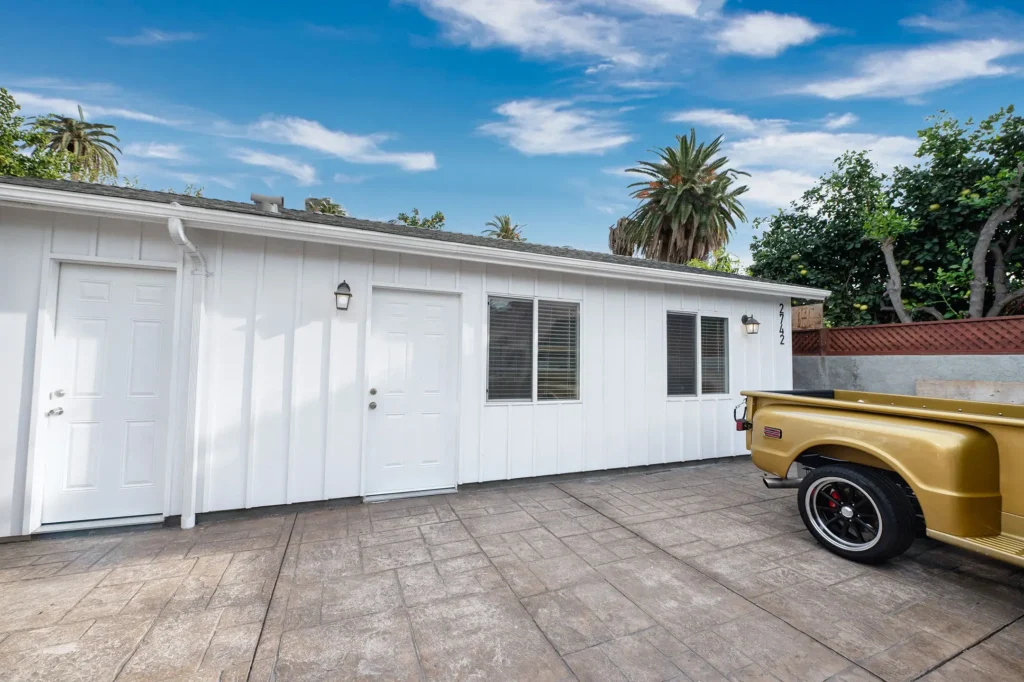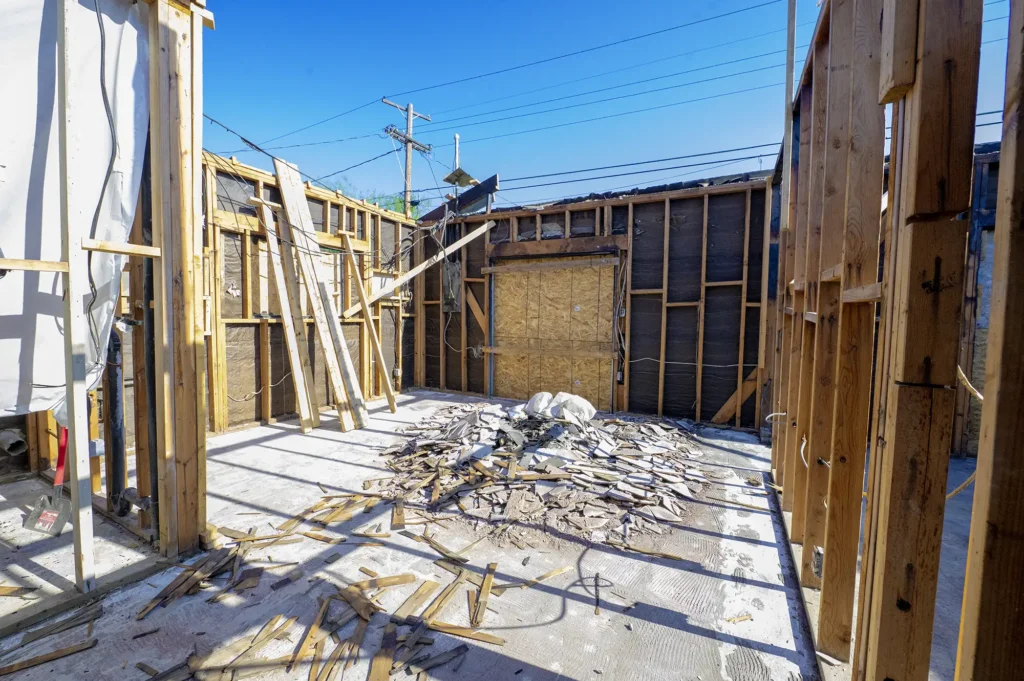
By Michael Fanghella
JDB Builders Inc. | BuildShure
As a homeowner in California, keeping up with the state’s ever-changing laws around building accessory dwelling units (ADUs) on your property can feel like an uphill battle. However, understanding the current regulations and how they may impact you is important, especially if you’re considering building an ADU as a source of extra income or to provide housing for a family member. This guide will walk you through the key changes to California’s ADU laws that will take effect in 2023 and provide recommendations for navigating the legal requirements. With some advance planning, you can ensure your ADU project goes smoothly and achieve your goals for this additional living space. The laws may be complex, but with the right information and strategies, you can build an ADU that benefits you and your community.
2023 ADU Law Changes in California: What to Expect
In 2023, California will implement several changes to its accessory dwelling unit (ADU) laws. Homeowners looking to build an ADU on their property should understand how these new rules may impact their plans.
The state will eliminate owner-occupancy requirements, allowing property owners to build ADUs even if they do not live onsite. However, local governments can still enforce owner- occupancy rules if they choose. Homeowners should check with their city or county to determine if this requirement will remain locally.
California will also prohibit homeowner’s associations (HOAs) from banning ADUs or charging excessive fees. HOAs can no longer forbid ADUs outright or charge homeowners disproportionate or unreasonable ADU-related fees. Homeowners in HOA-governed communities will have more freedom to build.
Parking requirements will be reduced, with some exemptions allowed. In many areas, ADUs under 800 square feet will need one parking space, while larger units may need two spaces. However, no additional parking will be required if the ADU is:
•Within 1/2 mile of public transit.
•Part of an existing primary residence.
•Converted from an existing structure (e.g. garage). •For very low-income households.
These new rules aim to make ADUs more feasible and affordable in California. By understanding the 2023 changes, homeowners can navigate the process confidently and build an ADU that suits their needs. With smart planning, ADUs can provide rental income, housing for family members, or greater financial security in retirement.
How to Build an ADU in California: 6 Steps to Get Started
To build an ADU in California, you must follow the proper steps to ensure your project complies with the latest laws and building codes.
Check if you can build an ADU. Review your city or county’s ADU ordinances to confirm your property is eligible. Most single-family homes can add an ADU. Check setback, height, and lot coverage requirements.
Choose the ADU type. Select between a detached unit, attached unit, or conversion of existing space. Detached and attached units typically require building permits while conversions may only need plumbing/electrical permits.
Obtain proper permits. Apply for building permits from your city or county’s planning department. Provide details on the ADU’s size, height, design, and building materials. Pay required permit fees which average $10,000 to $30,000 in California.
Design the ADU. Work with an architect to design plans for your ADU type that meet local requirements. For conversions, you’ll need minimal design work. For new builds, plans should include elevations, floor plans, plumbing, and electrical details.
Build or convert the ADU. For new ADUs, go through the construction process with contractors to build the unit. For conversions, work with contractors to renovate the space and install necessary plumbing and electrical. Construction typically takes 6-18 months.
Finalize paperwork. Once construction is complete, schedule final inspections with the city or county to ensure your ADU meets building codes. Make any necessary corrections then obtain a certificate of occupancy to legally rent out your ADU.
Following these steps carefully will help you successfully navigate California’s ADU laws and build a compliant accessory dwelling unit. Be sure to check with local government agencies for the latest updates to ordinances in your city or county.
ADU Design Options: Choosing the Right Type for Your Property
Detached ADUs
A detached ADU is a separate freestanding structure from the primary dwelling. It provides the most privacy for both the homeowners and ADU occupants. Detached ADUs can be converted sheds, garages, or purpose-built structures. They do require more space on the property and often higher costs to construct compared to attached ADUs. However, they also typically command higher rent prices.
Attached ADUs
An attached ADU shares one or more walls with the primary dwelling. Common types of attached ADUs include:
Basement or attic conversions: Converting unused space in the basement or attic of an existing home into an ADU. This is often the most affordable option but provides the least amount of privacy.
Garage conversions: Converting an attached garage into an ADU. The garage must be replaced with a new garage to comply with parking requirements. Garage conversions often provide a good balance of affordability and privacy.
Additions: Building an addition onto an existing home to create an ADU. Additions tend to be more expensive but provide more design flexibility. Care must be taken to ensure the addition blends in with the existing home’s architecture.
Duplexes or triplexes: Converting a single-family home into a duplex or triplex with separate entrances for each unit. This allows maximizing the number of ADUs but requires extensive renovations to separate utilities and ensure fire safety. Permitting can also be more complex.
In summary, the type of ADU that is right for your property depends on your budget, space constraints, and how much privacy you and your tenants desire. When choosing an ADU design, be sure to consider both your current and future needs to find an option that will serve you well for years to come.
Financing an ADU: Loans, Grants and Other Options Available
Financing an ADU can be challenging, as construction costs in California continue to rise. However, there are several options available to help make an ADU affordable.
Loans
The most common way to finance an ADU is through a home equity loan, line of credit, or cash- out refinance. Since an ADU adds value to your property, you can borrow against your home equity. ADU loans typically have lower interest rates than personal loans. The downside is that your home is used as collateral, so you risk foreclosure if you default on the loan.
Grants
Some cities and counties in California offer grants for ADU construction, especially if the ADU will be used for affordable or senior housing. Grants do not need to be repaid but often have stipulations on how the ADU can be used. Check with your local government to see if any ADU grant programs are available.
Creative Financing
If traditional financing options won’t work, consider creative alternatives like:
Crowdfunding: Raise money from individuals in exchange for rewards like naming rights or a share of rental income.
Private lenders: Borrow from individuals, often at higher interest rates. Make sure lenders are properly licensed.
Owner financing: Have the contractor finance construction, then pay them over time with interest. Get a lien waiver to protect your property.
Rent and refinance: Build the ADU, rent it out, then refinance your home to pay off construction costs using the additional rental income.
Cost-Saving Tips
There are several ways to lower ADU construction costs:
Choose a simple design without expensive features like high ceilings or architectural details.
Consider a modular or prefab ADU, which can cost up to 50% less than a custom build.
Handle some of the work yourself to avoid paying for a general contractor and their
markup. Get proper permits for any work you do.
Use budget-friendly and durable materials like vinyl siding, laminate countertops, and
linoleum flooring.
Add solar panels to lower utility costs and increase the value and appeal of your ADU.
Following these tips and exploring all financing options available can help make an ADU affordable and within your budget. With some creativity and patience, you can navigate the challenges of ADU construction costs in California.
Renting Out Your ADU: Rules & Regulations to Keep in Mind
If you decide to rent out your ADU, there are several regulations and responsibilities to keep in mind. Failure to follow these rules can result in legal trouble, so make sure you understand your obligations fully before becoming a landlord.
Zoning and Permit Requirements
Double check that your ADU meets all zoning and permit requirements for your city and county. Some areas may have additional rules around renting out ADUs, such as occupancy limits or parking space minimums. Ensure your ADU is properly permitted for rental use to avoid penalties.
Rent Control
Tenant Screening
Carefully screen all potential tenants before signing a lease. Run credit and background checks, verify sources of income and employment, check references, and interview top candidates. Look for tenants who will care for your property responsibly and pay rent on time.
Lease Agreements
Create a comprehensive lease agreement that outlines the terms of the tenancy, including the rental amount, security deposit, maintenance responsibilities, guest policies, and other important details. The lease should protect both you and your tenants by setting clear expectations. Consider consulting a real estate attorney to review your lease.
Maintenance and Repairs
As a landlord, you are responsible for maintaining the ADU and ensuring it remains habitable. Conduct regular inspections and make necessary repairs in a timely manner. Provide 24 hours’ notice before accessing the unit for non-emergency reasons. Keep records of all maintenance, repairs, and improvements made to the ADU.
By following these essential rules and regulations, you can feel confident renting out your ADU to good tenants. However, becoming a landlord is a big responsibility, so make sure you understand all that is involved before taking the plunge. If done right, renting out your ADU can provide extra income and help increase your property value over time.
Permitting Your ADU: Documents Needed and Fees to Expect
To obtain permits for your ADU, you will need to provide specific documents to your local planning department. Be prepared for the following:
Plans and Specifications
You will need a full set of plans for your ADU including:
Floor plans showing layout, room dimensions, and square footage
Elevation plans depicting front, rear, and side views
Structural details for any major components like foundations, framing, plumbing, and
electrical work
Specifications listing all materials, finishes, and components to be used
These plans must be drawn to scale by a licensed architect or engineer. Some jurisdictions may allow plans prepared by a draftsperson for certain ADU types. Check with your local planning department for requirements.
Application and Processing Fees
Fees will vary significantly based on your location and ADU type. You can expect to pay between $3,000 to $10,000 or more in total fees. These typically include:
Plan check fee for reviewing your plans, usually a percentage of the valuation of your project.
Permit fee for issuing the actual ADU permit, also based on valuation.
Impact fees for utilities, schools, parks, and other services. Some areas waive or reduce
impact fees for ADUs.
Additional fees may apply for sewer/water connections, zoning changes, variances, or
environmental reviews.
Some cities and counties offer fee waivers, reductions, and financing programs for ADUs, especially those that are deed-restricted for affordable housing. Check if any incentives are available in your area.
Other Documentation
You may need to provide additional documentation such as:
A property title report to confirm you are the legal owner of the property
A site plan showing the location and dimensions of existing structures and the proposed
ADU
Photos of the existing property and any structures that will be altered or demolished
Verification that any existing non-conforming structures will be brought up to current
code standards
With the proper documentation in hand and an understanding of the costs involved, you will be well on your way to successfully permitting your ADU. Be prepared for a multi-week or even multi-month review process, depending on the workload of your local planning department. Patience and persistence will pay off!
Hiring an ADU Contractor: How to Find a Reliable Builder
Finding a reliable contractor to build your ADU is crucial to the success of your project. Do your due diligence to find an experienced builder you can trust.
Verify Licensing and Insurance
Make sure any contractor you consider is properly licensed, insured, and bonded to work in your city. Permits and inspections will be required for most ADU projects, so the contractor must be familiar with local regulations. Liability insurance protects you in the event of any accidents on the job site.
Ask About Experience
An ideal ADU contractor will have specific experience building secondary dwelling units. Ask how many ADUs they have built, especially in your local area. They should be up to date with the latest building codes and design trends to construct an ADU that will maximize your rental income or property value.
Discuss the Details
Once you select a contractor, schedule a meeting to go over the details of your ADU project before signing a contract. Discuss the timeline, payment schedule, materials selection, and how they will handle the permitting process. Make sure you understand all terms and costs before commencing construction. With the right contractor on board following these tips, you’ll be well on your way to completing your new ADU.
ADU Tax Implications: How ADUs Can Impact Your Property Taxes
How ADUs Can Impact Your Property Taxes
Adding an ADU to your property may increase your property taxes, as the additional living space and rental income potential can increase your property value. However, California law limits how much property taxes can increase following ADU construction.
Under Proposition 13, property taxes in California are capped at 1% of the property’s assessed value, which can only increase by a maximum of 2% each year. When an ADU is constructed, the county assessor will reassess your property to determine its new taxable value. The assessed value of the ADU itself is taxed at the current tax rate for the tax year it was completed. However, the assessed value of your existing home and land cannot increase by more than 2% of its previously assessed value.
For example, if your existing property was assessed at $500,000 before adding a $200,000 ADU, the total assessed value after construction would be $700,000. Property taxes on the $500,000 existing assessment could only increase by 2% ($10,000), while the full $200,000 ADU value would be taxed at the current tax rate. Your property tax bill would increase, but not by the full $200,000 ADU value.
Some counties may offer property tax exemptions for ADUs, such as waiving taxes on certain square footage of the ADU or for a limited time period. Check with your county assessor to see if any ADU property tax exemptions or incentives are offered. They can also provide an estimate
of your potential property tax increase from an ADU based on your property’s assessed value and the details of your ADU project.
While ADUs can increase property taxes, the additional rental income from an ADU often offsets some or all of the increased costs. And in the long run, adding an ADU may increase your property value by more than the cost of construction, resulting in a good return on your investment. Carefully evaluating the numbers for your own property and ADU project can help determine if the tax implications ultimately make financial sense.
ADU FAQs: Answers to Common Questions About Accessory Dwelling Units
California’s ADU laws are constantly evolving. As an owner of an ADU or someone considering building one, it’s important to stay up-to-date with the latest regulations to ensure your unit remains compliant. Here are answers to some of the most frequently asked questions about ADUs.
What is an ADU?
An ADU, or accessory dwelling unit, is an additional living space on a residential lot, either attached or detached from the primary dwelling. ADUs are also known as granny flats, in-law suites, or backyard cottages.
What are the requirements to build an ADU?
To build an ADU in California, you must:
Own a residential lot zoned for single-family or multi-family housing
Meet your local building codes for ADU size, height, setbacks, parking, etc. These vary
by city and county.
Obtain proper permits before construction. This typically includes planning, building, and
utility permits.
ADUs must have certain amenities like a kitchen, bathroom, sleeping area, and separate
entrance.
Do I need additional parking for an ADU?
Parking requirements for ADUs depend on your local regulations. Many cities and counties have relaxed or eliminated additional parking spots for ADUs, especially if located near public transit. Check with your local planning department for details on your property’s requirements.
Can I rent out an ADU?
Yes, ADUs can be rented out as long as you obtain proper permits and the unit meets health and safety codes. Renting an unpermitted ADU is illegal. ADUs must also follow the same rent control and tenant protection laws as primary dwellings.
Do ADUs affect property taxes?
The construction of an ADU may increase your property taxes, especially if it significantly increases your property value. However, California law limits property tax increases from ADUs to a maximum of $75,000 of the ADU’s value. Property tax increases from ADUs are also limited to 5% of the current tax assessment per year.
Staying up-to-date with California’s ADU laws and understanding how they apply to your specific situation is key to successfully building and operating an accessory dwelling unit. Be sure to check with local government planning departments to determine the rules in your city or county.
Conclusion
As California’s ADU laws continue to evolve, it’s important to stay up to date with the latest changes to ensure your ADU project goes smoothly. While the state aims to make the ADU permitting process faster and more affordable or retreat pod e, there are still many regulations and requirements to keep in mind. Do your research, connect with local government officials, and consider hiring an expert to help guide you through the steps. Though the road ahead isn’t always clear, with the proper planning and persistence, you can build an ADU that provides housing for your loved ones or extra income for years to come. Staying informed and advocating for more ADU-friendly policies can help make the journey a little easier for all. The future of ADUs in California is bright.
JDB Builders, Inc. and BuildShure provide the best of both in a sip panel design manufactured ADU – Casita or a retreat pod for your Property. Call us today we have the experience and the financing to make this choice the easiest one yet. call Buildshure at 844-79-BUILD (28453) or email us at info@buildershure.com.



